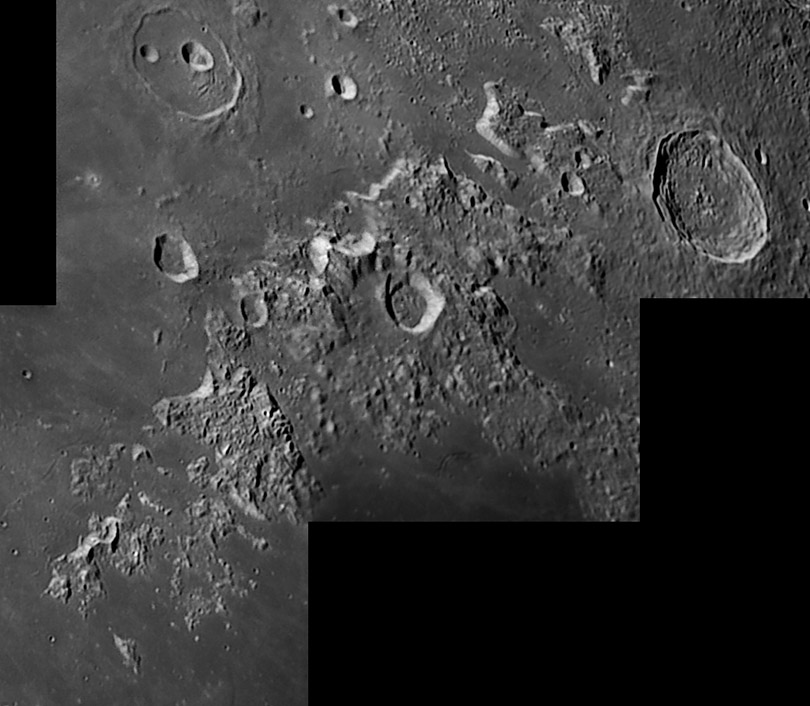Difference between revisions of "October 30, 2008"
| Line 6: | Line 6: | ||
<em>image by [mailto:g.tarsoudis@freemail.gr George Tarsoudis], Greece</em><br /> | <em>image by [mailto:g.tarsoudis@freemail.gr George Tarsoudis], Greece</em><br /> | ||
<br /> | <br /> | ||
| − | Most of the Moon's [https://the-moon.us/wiki/ | + | Most of the Moon's [https://the-moon.us/wiki/Lunar_Mons 18 mountain ranges] (<em>montes</em> in IAU's Latin) are related to impact basins, typically being part of a basin rim or ring. The Caucaus Mountains, captured here on a slant, are undoubtedly related to a basin, presumably Imbrium to the west, but the oblique angle of the Caucasus makes makes the relation unclear. The fact that the Caucasus are highest on their western edge, with a bright scarp front like the Apennines, suggest that they are part of Imbrium's rim. But if you draw a [http://www.lpod.org/coppermine/displayimage.php?pid=2326&fullsize=1 circle] around Imbrium to mark its rim, the Caucasus deviate from the circle; have they somehow been rotated counterclockwise a few degrees? Actually the southern end of the Caucasus - as far north as the area of Theaetetus - lies near the rim circle, but the Caucasus bend toward the east there and are progressively further east of the circle to the north. I have noticed before that Cassini is a break in the Imbrium-circling mountains and have [[March_19,_2006|speculated]] that the area behind (east of it) has been filled in with lava after the Caucasus rotated eastward. Sounds like a good story. <br /> |
<br /> | <br /> | ||
<em>[mailto:tychocrater@yahoo.com Chuck Wood]</em><br /> | <em>[mailto:tychocrater@yahoo.com Chuck Wood]</em><br /> | ||
Latest revision as of 17:56, 13 October 2018
Rotated Mountains?

image by George Tarsoudis, Greece
Most of the Moon's 18 mountain ranges (montes in IAU's Latin) are related to impact basins, typically being part of a basin rim or ring. The Caucaus Mountains, captured here on a slant, are undoubtedly related to a basin, presumably Imbrium to the west, but the oblique angle of the Caucasus makes makes the relation unclear. The fact that the Caucasus are highest on their western edge, with a bright scarp front like the Apennines, suggest that they are part of Imbrium's rim. But if you draw a circle around Imbrium to mark its rim, the Caucasus deviate from the circle; have they somehow been rotated counterclockwise a few degrees? Actually the southern end of the Caucasus - as far north as the area of Theaetetus - lies near the rim circle, but the Caucasus bend toward the east there and are progressively further east of the circle to the north. I have noticed before that Cassini is a break in the Imbrium-circling mountains and have speculated that the area behind (east of it) has been filled in with lava after the Caucasus rotated eastward. Sounds like a good story.
Chuck Wood
Technical Details
22 July 2008. Newtonian 10 inch st f/6.3 + DMK21AF04 + barlow 3X + Red filter with IR-cut; mosaic 7 images, Image processing Registax 4.0 and PS CS3.
Related Links
Rükl plate 13
Yesterday's LPOD: A Sharper Image
Tomorrow's LPOD: Sub-Polar Marker
COMMENTS?
Register, Log in, and join in the comments.



